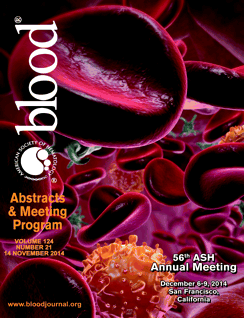Abstract
Introduction
Burkitt Lymphoma (BL) is the most common subtype of Non-Hodgkin Lymphoma (NHL) in childhood and adolescence. On the molecular level translocations involving the MYC oncogene are known as the hallmark of BL. However, as this event is not sufficient for BL pathogenesis, the search for additional driver mutations is ongoing. Recently published next-generation sequencing studies introduced various recurrently mutated genes in BL and reported the finding of mutations in Inhibitor of DNA-binding 3 (ID3) (Richter et al., Nat Genet 2012; Schmitz et al., Nature 2012; Love et al., Nat Genet 2012). Within the same pathway also the functional partner of ID3, TCF3, and the downstream target CCND3 were shown to harbor recurrent mutations. Functional analyses of the altered proteins hint at increased cellular growth and proliferation, among others by activating PI3K and CDK4/6.
Methods
To characterize the frequency and clinical relevance we investigated these candidate genes in a well-defined cohort of 63 pediatric BL that were uniformly diagnosed and treated according to NHL-BFM protocols. Also we screened the second most common pediatric B cell malignancies, precursor B cell leukemias (pB-ALL) and Diffuse Large B-cell Lymphoma (DLBCL), for mutations within this pathway. Initial pretreatment tumor samples from 63 BL (including 14 Burkitt leukemias), 15 DLBCL, 6 cases with features intermediate between BL and DLBCL (B-NHL nfc), 96 pB-ALL and an extended group of another 10 relapsed BL were available for analysis. Tumor cell content for DNA extraction was estimated to be at least 60%. Sanger sequencing was performed for the full coding region of ID3 in all entities. Additionally, TCF3 exon 16 and CCND3 exon 5 were investigated in all BL, DLBCL and B-NHL nfc cases. Clinical data were available from the NHL-BFM and ALL-BFM study center. This study was approved by the Ethical Advisory Board of the University of Giessen (A89/11 Amendment 2013).
Results
Mutation frequencies for the 60/63 MYC translocation positive BL were 48 (80%) for ID3, TCF3 11 (13%) and CCND3 22 (37%) respectively. Most of the cases presented with more than one ID3 mutation and all affected cases had at least one mutation affecting the functional binding helices of ID3. At least one of the three candidate genes was altered by a potential protein-changing mutation in 53/60 cases (88%). In the group of 15 DLBCL three presented with ID3 mutations. Remarkably, in two of these cases a translocation involving MYC was reported in the study database. There were no ID3 mutations in 96 pB-ALL cases, but two cases presented with non-protein changing variants.
With respect to clinical characteristics and patient outcome there were no significant differences with respect to ID3, TCF3 and CCND3 mutation status. To further analyze whether ID3, TCF3 and CCND3 mutations at initial diagnosis have prognostic impact on outcome, ten additional cases of initial tumor samples from patients who suffered relapse were analyzed. However, the ID3, TCF3 and CCND3 mutation status at diagnosis did not differ significantly among the 19 relapsed and the 52 non-relapsed BL patients.
Discussion
The aim of this study was to determine the relevance of ID3, TCF3 and CCND3 gene mutations in a well-defined cohort of pediatric BL. Most interestingly we found ID3 mutations in BL with a significantly higher frequency than previously published in the index studies including patients of all age groups by Richter et al., Schmitz et al. and Love et al., with frequencies ranging between 34 and 68%.
The finding that ID3 mutations were virtually exclusive for MYC translocation positive tumors offers the prospect of the ID3 mutation status as a criterion of interest for analysis of intermediate cases between BL and DLBCL.
As expected, no ID3 mutations were found in pB-ALL cases, supporting the assumption of exclusive occurrence within the pathogenesis of mature B cell lymphoma.
While there was no evidence for a certain role with respect to clinical manifestations and patient outcome, the high frequency of 88% BL cases with at least one mutation in ID3, TCF3 or CCND3 leads to the proposal that this pathway plays an emerging role especially in pediatric BL and it might represent the second hit in BL pathogenesis. This is of special clinical interest as already available kinase inhibitors might successfully address the downstream targets PI3K and CDK4/6.
No relevant conflicts of interest to declare.
Author notes
Asterisk with author names denotes non-ASH members.

